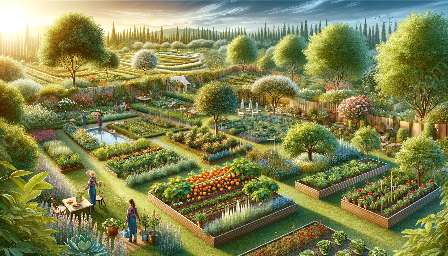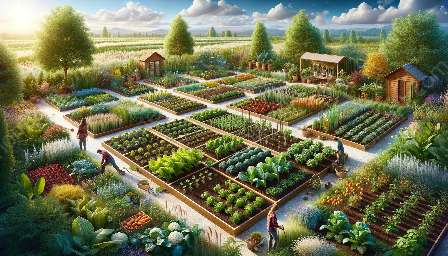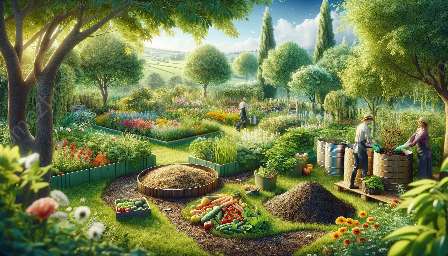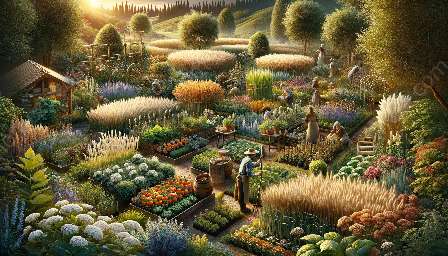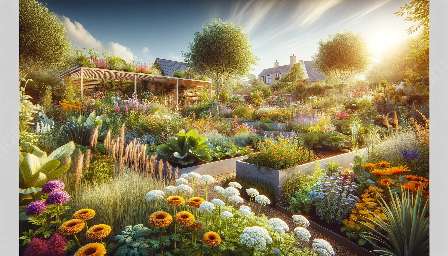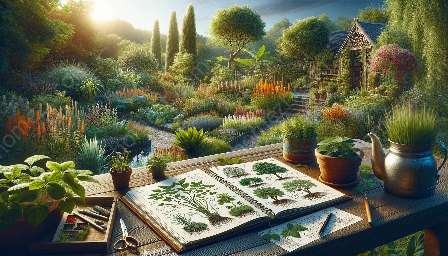Heritage gardening embodies the rich tradition of cultivating plants that have been passed down through generations, often dating back centuries. This gardening practice emphasizes the preservation of heirloom plant varieties, traditional techniques, and cultural significance, reflecting the regional and historical context of a community or culture.
When considering the concept of 'heritage gardening,' it is essential to delve into the ideals of companion planting and the broader scope of gardening and landscaping. Companion planting, in particular, plays a vital role in heritage gardening, as it involves the strategic arrangement of plants to maximize their growth, deter pests, and enhance flavor in a garden.
The Significance of Heritage Gardening
Heritage gardening holds cultural, historical, and ecological significance. It serves as a bridge between past traditions and contemporary sustainable practices, fostering a deeper connection to the land and acknowledging the invaluable knowledge of our ancestors. The practice of heritage gardening is often rooted in traditions specific to a region, ethnic group, or historical period, making it a representation of diverse cultural heritages.
Connecting with the Past
By embracing heritage gardening, gardeners and enthusiasts can experience a profound connection with their cultural roots. Preserving heirloom varieties ensures that ancient knowledge and agricultural practices are not lost to modernization, providing a tangible link to the past. This preservation effort is crucial in safeguarding plant diversity and contributing to sustainable agricultural systems.
Environmental Sustainability
Heritage gardening promotes sustainable and environmentally-friendly practices. By cultivating heirloom plants, gardeners contribute to the preservation of genetic diversity, which is essential for resilience in the face of climate change and other environmental challenges. Additionally, heritage gardening often involves organic and natural growing methods, reducing the reliance on synthetic chemicals and pesticides.
Companion Planting and Heritage Gardening
The concept of companion planting aligns harmoniously with heritage gardening principles. In heritage gardens, companion planting is utilized to mimic natural ecosystems, harness the benefits of plant synergy, and promote biodiversity. This traditional practice involves planting mutually beneficial combinations of species based on their unique interactions, such as pest control, nutrient enrichment, and space optimization.
Furthermore, the practice of companion planting in heritage gardens reflects indigenous and cultural wisdom in understanding plant relationships and creating resilient, self-sustaining ecosystems. This approach not only supports the health and vitality of plants but also fosters a deeper sense of interconnectedness within the garden environment.
Examples of Companion Planting in Heritage Gardening
One exemplar of companion planting in heritage gardens is the Three Sisters planting technique, originating from Native American agricultural traditions. This method interplants corn, beans, and squash, each providing unique advantages to the others. The corn provides a structure for the beans to climb, while the beans fix nitrogen in the soil, benefiting the corn and squash. The squash serves as a natural mulch, reducing weed growth and retaining soil moisture. This interdependence between the three crops exemplifies the symbiotic relationships inherent in companion planting.
Gardening, Landscaping, and Heritage Preservation
Within the broader context of gardening and landscaping, heritage preservation is essential for ensuring the continuity of cultural and ecological values. Incorporating heritage gardening practices into landscaping designs can create visually captivating displays that honor and celebrate cultural heritage. By integrating heirloom plants and traditional gardening techniques into landscapes, individuals can contribute to the preservation of historical significance while creating aesthetically pleasing outdoor spaces.
Designing Heritage Gardens
When designing heritage gardens, consideration should be given to the selection of heirloom plant varieties indigenous to the region or reflective of specific cultural traditions. This approach not only adds a distinctive charm to the landscape but also fosters a deeper appreciation for the history and significance of the plants. Additionally, integrating elements such as heritage fruit trees, traditional herbs, and historical garden structures can enhance the authenticity of heritage gardens.
Safeguarding Cultural Traditions
As heritage gardening enthusiasts cultivate and maintain their gardens, they actively safeguard cultural traditions and historical knowledge. Sharing the stories and significance of heritage plants and gardening practices with future generations perpetuates cultural heritage, ensuring that the value of these traditions endures.
Conclusion
In conclusion, heritage gardening serves as a testament to the enduring legacy of traditional horticultural practices and the invaluable contributions of diverse cultural heritages. By intertwining the principles of heritage gardening with companion planting, gardening, and landscaping, individuals can partake in a journey that connects them with the past, fosters sustainable practices, and cultivates a deeper understanding of the natural world.








